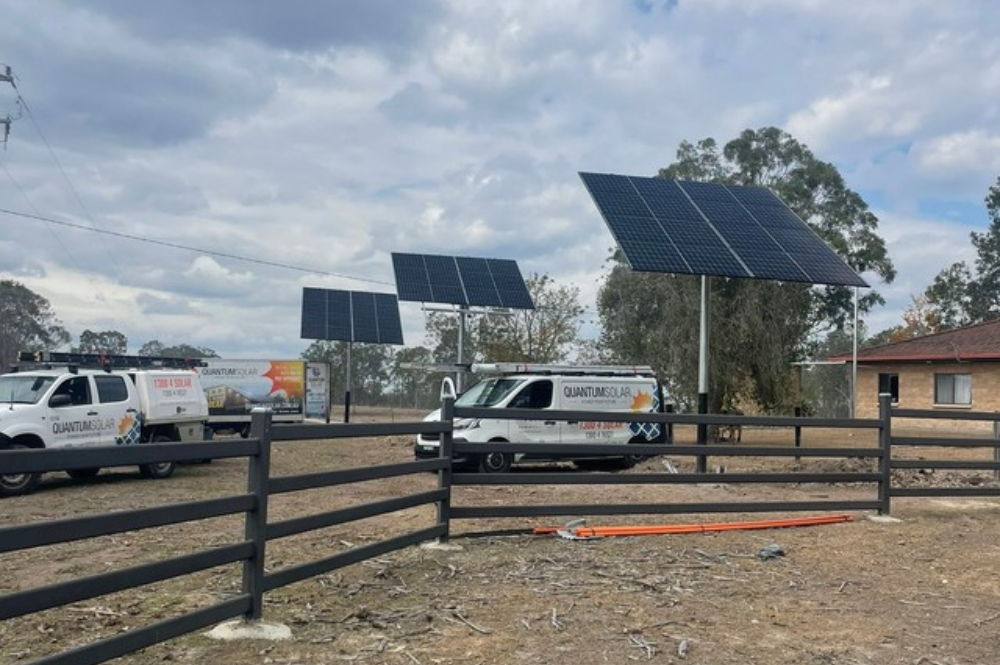When it comes to solar, most people visualise solar panels lining the rooftops of homes and buildings. But have you heard about ground mounted solar systems? They’ve been quietly gaining traction, offering a unique set of advantages for those seeking clean, renewable energy. Let’s delve into everything ground mounted solar: exploring what it is, the various racking systems available, the pros and cons, and the ideal conditions for installation.
What is ground mounted solar?
As the name gives away, ground mounted solar involves the installation of solar panels on the ground, instead of rooftops. The system is anchored and the panels are strategically positioned to maximise sunlight exposure throughout the day.
What are the types of ground mounted solar panel racking systems?
Ground mounted solar systems are customised with various racking systems. Each cater to specific needs.
- Traditional racking: Elevated metal structures for maximum sunlight exposure
- Concrete racking: Concrete footing for greater stability and wind resistance
- Ground screw racking: A highly stable solution that utilises large screws to anchor the panels securely into the ground
- Ballasted racking: Concrete blocks that sit on the ground, as opposed to penetrating anything into the ground. The weight of these blocks hold the panels securely in place
- Single-axis tracking: Panels automatically adjust their angle through the day to follow the sunlight
- Dual-axis tracking: Offers even greater efficiency by adjusting both orientation, and tilt
Are ground mounted solar panels better?
It depends on your unique circumstances. But ground-mounted solar panels come with distinct advantages.
Pros:
- Maximise sunlight exposure: Ground-mounted panels are precisely positioned for maximum sun exposure
- Improved efficiency: Enhanced air circulation keeps panels cooler, increasing their efficiency
- Easier maintenance: Ground-mounted panels are easily accessible for the odd spot of cleaning and maintenance
Cons:
- Higher cost: Ground-mounted systems are typically more expensive due to additional materials and labor
- Land space: These systems occupy more ground space, which is not usually suitable for most residential properties
- Permits: Depending on local regulations, a building permit may be required
What sort of space do I need for a ground mounted solar system?
Ground mounted solar systems aren’t suitable for all properties. When considering a ground mounted solar installation, see if your site meets the following criteria:
- Flat or gently sloping: The land should be relatively flat or only slightly sloping
- Flood-proof: Ensure the location is outside of a 100-year flood plain
- Shade-free: Avoid areas with shade from nearby trees or structures
- Proximity to electrical infrastructure: Select a site close to existing electrical infrastructure to minimise trenching and cabling costs
- Suitable ground: The ground should be neither too soft, requiring concrete foundations, nor too hard, which would require pre-drilling
If you have the space and the need, ground mounted solar systems offer a compelling alternative to rooftop installations. While they do come with added costs, they also deliver superior sunlight exposure and efficiency. To determine if a ground mounted solar system is right for you, consider your specific needs and property, and consult with a solar provider like us.


Leave A Comment